Matador Network's Blog, page 1247
October 4, 2018
Horror film locations you can visit

Horror movies have come a long way over the years, especially with the special effects and computer-generated monsters and gore that the industry uses nowadays. But while the newer horror movies scare aplenty, there’s something about the classics that really sends a chill up our spines. Maybe it’s because they didn’t have the same technology, so they had to really put in the effort to make it seem real. With Halloween coming up, there’s no better way to get in the spooky spirit than by visiting the filming locations for some of the most famous horror movies in film history. From a time warp in an old English mansion to a gas station turned BBQ joint, here are eight horror movie locations that you can visit in real life. But be warned — because spoilers.
1. Elm Street house from A Nightmare on Elm Street
View this post on InstagramA post shared by www.filmedthere.com (@filmedthere) on Apr 13, 2017 at 9:18pm PDT
It might be a little disheartening to learn that the house from A Nightmare on Elm Street isn’t actually on Elm Street, but finding out that the outside has been kept intact ever since filming should cheer horror aficionados up a bit. In the first movie, it belonged to Nancy Thompson and her family, then Jesse Walsh’s in A Nightmare on Elm Street II: Freddy’s Revenge, and then as Freddy’s dream house in subsequent movies. Visiting here requires the same respect as other locations that are actual people’s home, so be sure to take photos without loitering or damaging any of the property.
Where: 1428 N Genesee Ave, Los Angeles, California 90046
2. Michael Myers’ house from Halloween
View this post on InstagramA post shared by Michael Myers (@michaelmyers364) on Jul 31, 2018 at 8:08am PDT
Michael Myers is an iconic boogeyman character, right up there with the likes of Freddy Krueger and Jason Voorhees. He first appeared in John Carpenter’s Halloween in 1978, and the movie’s success paved the way for the series to flourish, turning it into an 11-film franchise. One of the more recognizable locations is the Myers house, where the film opens to him murdering his older sister and her brother. While it takes place in the fictional town of Haddonfield, Illinois, the house is actually located in Pasadena, California. The house is private property, home to the Alegria Chiropractic Center, so fans aren’t able to walk the property unless they’re being seen by one of Alegria’s doctors. That said, a pretty good view of the house can be seen from just across the street.
Where: North of 1000 Mission St, South Pasadena, California, on the east side of Meridian Ave
3. Timberline Lodge from The Shining
View this post on InstagramA post shared by Timberline Lodge (@timberlinelodge) on Feb 9, 2018 at 3:49pm PST
Stephen King is a horror mastermind who published the novel The Shining in 1977. Just three years later, Stanley Kubrick produced and directed its screen adaption. While it was mostly filmed in studio, several exterior shots at the Overlook Hotel, where most of the film’s action takes place, were shot at the Timberline Lodge, though King’s inspiration for the Overlook is said to be the Stanley Hotel in Colorado. According to the Timberline, Kubrick was asked not to film scenes of room 217 (the room number used in the book, the movie’s is room 237) so that future visitors wouldn’t be afraid to stay there — but in a maybe not-so-unexpected twist, it’s the most requested room. Staying at the Timberline also affords visitors access to amazing to snowboarding, skiing, and hiking trails.
Where: 27500 E Timberline Road, Government Camp, Oregon, 97028
4. Dr. Frank N. Furter’s mansion from The Rocky Horror Picture Show

Photo: SimonWest/Shutterstock
Those who have seen The Rocky Horror Picture Show will never forget it, and those who haven’t can’t stop hearing about it — and for good reason. What began as an unemployed-at-the-time actor’s project to keep busy turned into a stage production and then into the 1975 science-fiction, horror-comedy musical we all know and love. It was shot in England at Bram Studios and on location at the Oakley Court Hotel. Fans may recognize Oakley Court as the mansion of the enigmatic Dr. Frank N. Furter, where central characters Brad and Janet find themselves after their car breaks down in the rain. During filming, it was an empty estate with no working utilities, but it has now been turned into a fully functioning hotel. Many of the original structures from the film remain. There are 118 guest rooms, all designed in typical country-British fashion; a spa; swimming pool; tennis courts; a croquet lawn; a golf course; and boat and bike rentals. You’ll be able to live it up in the English countryside and have an easier time of it than Brad and Janet.
Where: Windsor Rd, Water Oakley, Windsor SL4 5UR, UK
5. The lighthouse from The Fog
View this post on InstagramA post shared by Hagi Fuentes (@ha.gi_) on Sep 10, 2018 at 4:23pm PDT
John Carpenter’s second horror movie, The Fog, opened in 1980, just two years after Halloween. In it Stevie, a DJ, goes to a lighthouse to host her radio show after her son shows her a piece of wood that he found on a beach near the lighthouse. Eeriness ensues, and the lighthouse becomes a significant location where Stevie is able to see the fog closing in on the town. The lighthouse is Point Reyes Lighthouse in California, and fans are able to walk right up to the lighthouse and go inside. It’s a steep, 308-step walk down to the lighthouse, and it’ll almost always be covered in fog — making it seem almost as if you were in the movie yourself.
Where: Inverness, California, 94937
6. Palazzo Vecchio from Hannibal

Photo: Spirit Stock/Shutterstock
If you’re a fan of the cannibal serial killer’s story and have been looking for a push to visit Italy, look no further. Florence’s Piazza della Signoria is famous for a number of reasons: It’s one of the most highly trafficked plazas in the city and home to the copy of Michelangelo’s David statue, the Loggia dei Lanzi with its wide arches on top of Corinthian-style columns, and the marble Fountain of Neptune. The Romanesque Palazzo Vecchio also finds its home in the plaza and is the city’s town hall. In Ridley Scott’s Hannibal (2001), the fortress is used as the setting for one of the more gruesome murders in the movie.
One of the plotlines in the film is Rinaldo Pazzi, Chief Inspector, investigating the disappearance of a library curator. During his search, he talks to who he thinks is Doctor Fell, the library’s assistant curator, but is actually Hannibal pretending to be Fell. When Pazzi learns of the bounty on Lecter’s capture, he becomes enraptured by greed and tries to capture the killer himself. Lecter baits Pazzi into a room in the Palazzo Vecchio, ties him up, cuts out some of his gastrointestinal organs, then hangs him over a balcony — right next to some of the plaza’s famous statues.
Where: Piazza della Signoria, 50122 Firenze FI, Italy
7. The stairs from The Exorcist
View this post on InstagramA post shared by Daniel Flores (@dflores_ehl) on Sep 26, 2018 at 6:01am PDT
The Exorcist, filmed in 1973, is definitely a movie that’s gone down in cinematic history as one of the best in its genre. In the supernatural horror, a mother is living in Georgetown while working as an actress when her 12-year-old daughter becomes possessed by a demon after playing with a Ouija board. After taking her daughter to a number of doctors, Regan’s mother is recommended to perform an exorcism, and they meet Father Karras. These stairs are where part of the movie’s climax takes place; Karras confronts Regan’s demon and is then possessed by it. He sacrifices himself by jumping out of a window and falling down a myriad of stairs, taking the demon with him.
Where: On the corner of Prospect St NW & 36th St NW in Georgetown, Washington, DC
8. The gas station from The Texas Chainsaw Massacre
View this post on InstagramA post shared by quin quinlan (@quinstergram) on Sep 2, 2018 at 2:02pm PDT
The Texas Chainsaw Massacre saw many people complaining about the sheer amount of violence in the film and was banned from several countries from the get-go. However, it grossed over $30 million, surpassing its limited budget of under $200,000 tremendously. The gas station is one the more infamous locations, though it initially seemed harmless. The group in the film stopped to get gas only to be told that there was none; they happen upon a house soon after where most of them are killed. One woman, Sally, manages to escape to the gas station, where she then is caught and tormented by the owner. The actual gas station had been abandoned for a while until it was turned into a horror-themed barbecue restaurant full of memorabilia called The Gas Station. And if you really want to have a fright fest, The Gas Station has converted space in the back of the station into cabins that guests can book a stay in.
Where: 1073 TX-304, Bastrop, Texas 78602 

More like this: 8 serial killer tours for the true-crime obsessed
The post 8 horror movie locations you can visit in real life appeared first on Matador Network.

Wellness weekend in Washington state
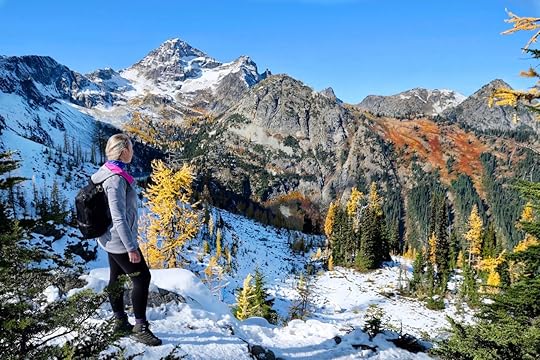
Thanks to cooling temperatures and the tourist season coming to an end, fall in Washington is crisp and quiet. The upper left corner of the country is undoubtedly known for its dramatic landscapes, but it should also be known for its sometimes innate, sometimes inventive wellness offerings. With the focus on keeping things local, Washington businesses have a way of integrating the Pacific Northwest culture and landscape with elements of health and wellbeing. From a goat farm in Snohomish that offers yoga with its hooved residents to a popular brunch spot in Seattle known for its sustainable, locally sourced menu, here’s our guide to how to have the perfect wellness weekend in Washington state.
Where to move your body
Nothing says wellness quite like getting your sweat on. Moving your body in any way — whether it’s walking, hiking, practicing yoga, or trying a new exercise class — is one of the key elements to living well and feeling well. Washington offers some pretty epic views for those looking to get outdoors and superb fitness classes for those looking to sweat it out in a studio. Here’s our selection of the best places to get moving on the Washington coast.
1. Goat Yoga at Wobbly Ranch, Snohomish
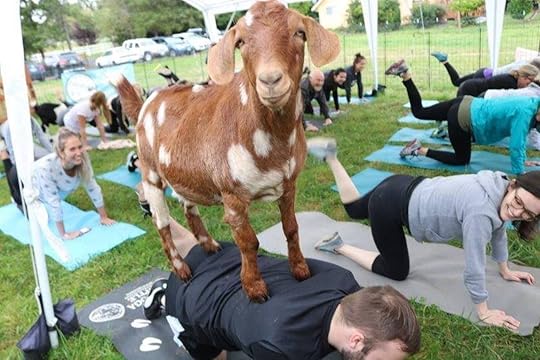
Photo: Goat Yoga Seattle/Facebook
Wobbly might not be the first thing that comes to mind when you think of yoga practice, but at Wobbly Ranch, it’s not only embraced, but it’s also encouraged. The ranch takes vinyasa flow to the next level with its Goat Yoga practice. This yoga experience has become a worldwide phenomenon, and it’s just as fun for visitors as it is for the four-legged locals. Yogis can enjoy a strong, beginner to intermediate, 60-minute vinyasa flow in the company of rescued goats. Sure it’s a little wobbly, what with 25- to 50-pound goats hopping on your back while you do downward dog, but that’s to be expected — and it’s part of the fun. The cost of the class goes toward Wobbly Ranch’s mission of keeping goats happy, healthy, and safe.
2. Hiking in Wallace Falls State Park

Photo: Jim Cheney/Shutterstock
If you’re looking for a quintessential Washington hike — think waterfalls, ferns for days, and views of the peak-dotted Olympic Skyline — Wallace Falls State Park fits the bill. This 1,300-plus-acre park has a variety of trails to hop on for everyone from the beginner hiker to the peak-bagger. We recommend the Woody Trail, which gives hikers the option of walking all the way to the Upper Falls or opting for a more leisurely stroll to the Lower Falls. Hikers who want something in between can take the trail to the Middle Falls lookout — you’ll get switchbacks and killer views, but you’ll skip out on that steep ascent and its accompanying descent.
3. Studio 45, Seattle

Photo: Studio 45/Facebook
Never experience the same workout twice at this Pilates studio in Seattle. Sweat and shake it out at one of Studio 45’s 45-minute Lagree fitness classes on a Megaformer. These classes are a killer workout that’ll get your heart rate up but won’t damage your joints, thanks to its low-impact movements. If you’re new to Lagree, or a Megaformer, opt for the Lagree 101 class, which moves at a slightly slower pace that’s ideal for beginners.
Where to fuel your body
A weekend of wellness wouldn’t be complete without some good eats. At these Washington cafes, you’ll get to eat like a local while keeping it local. Many of the upper left’s restaurants focus on cuisine that’s harvested within the state, so visitors can really get a taste of true Washington flavor. Here are some of the top places to fuel your body in the region.
1. Local 360, Seattle
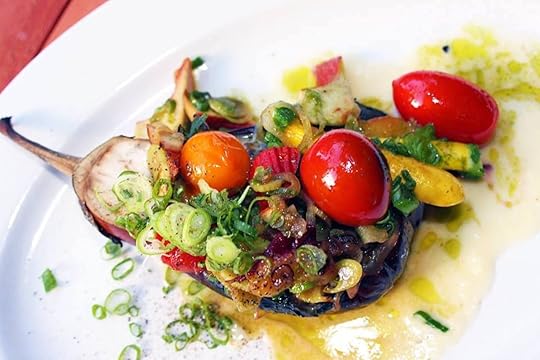
Photo: Local 360/Facebook
If you want to get a real taste of Washington, Local 360 is where it’s at. This cafe’s menu is made up almost entirely of ingredients sourced from the state. In fact, as the cafe promises, the majority are harvested within 360 miles of Seattle, hence the name. Each menu option shows the cafe’s mindfulness — meats are sourced from animals that are treated humanely and fed a vegetarian diet and brunch buffs will appreciate the eggs from cage-free, pastured hens. There’s a high environmental standard at Local 360, too; the cafe avoids single-use plastics whenever possible, offers only compostable to-go containers, and opts for reusable cloth napkins.
2. Cafe Wylde, Everett

Photo: Cafe Wylde/Facebook
There’s a ton of great, healthy options on the menu at this vegan cafe, but the tostadas with cashew sour cream are the real highlight on the menu. That said, don’t skip out on dessert; the options change from time to time, but if they’ve got chocolate cashew cookies, they’re a (mostly) guilt-free indulgence not to be missed. If the weather permits, grab a table on the sidewalk and enjoy the quiet Everett neighborhood.
3. Juicebox Cafe, Seattle

Photo: Juicebox Café/Facebook
Juicebox Cafe’s food is as healthy and delicious as its decor is Instagramable. This little cafe only has room for about 25 people at a time, giving it an intimate feel. The food is mega-fresh and locally sourced, and the menu is full of plant-based dishes, gluten-free options, and interesting juice blends. If you’re pressed for time, you can call ahead for a takeout order.
4. Sweetgrass Co., Seattle

Photo: Sweetgrass Food Co./Facebook
Fuel up at Sweetgrass Co. before you get your shop on at Pike Place Market, which is only half a mile from the venue. Every dish on the menu here is made in-house, and ingredients are locally and sustainably sourced and organic whenever possible. It’s open early Monday through Saturday, but it’s closed on Sundays, so you’ll have to get brunch elsewhere.
5. Unicorn Bar, Seattle
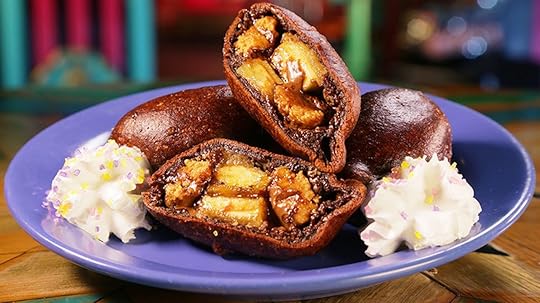
Photo: Unicorn Bar
Test your wits and give your brain a workout with a trivia night at Capitol Hill’s carnival-esque Unicorn Bar. Its healthy twist on bar food is a pleasant surprise, with vegan options that include quinoa tater tots and a vegan quinoa burger.
Where to soothe your body
Once you’ve moved and fueled, you’ve definitely earned the right to soothe your body. From salt caves to mineral baths, these spas will you reach maximum relaxation for the TLC that a wellness weekend warrants.
1. Salt Room & Spa, Bellevue

Photo: Salt Room at Salt Mine Arium – The Salt Spa of Bellevue/Facebook
Salt therapy, or halotherapy, has been increasing in popularity and made its way to Bellevue, Washington, at the Salt Room & Spa. This all-natural therapy requires little more than sitting quietly, relaxing amongst walls of Himalayan salt for a 45-minute session. Halotherapy is said to be good for those who suffer from asthma and allergies, and it’s also been touted as a wonderfully relaxing experience. Reiki is also available, as well as massages (solo or with a group), yoga, and meditation.
2. Glade Spring Spa, Cle Elum
View this post on InstagramA post shared by OLAVIE (@olavieliving) on Mar 31, 2017 at 11:00am PDT
Housed inside Suncadia Resort in Cle Elum, Washington, sits Glade Spring Spa. Visitors at the hotel can, of course, enjoy the spa, but it’s also made available to non-guests looking for a relaxing day. There are some pretty interesting treatments available here, like a Vichy shower room (an out-of-the-box-style treatment that involves a massage alongside shower-like water therapy), various outdoor mineral baths, and the standard treatments, like classic massages and facials.
3. Yoga Lodge Whidbey Island, Whidbey Island
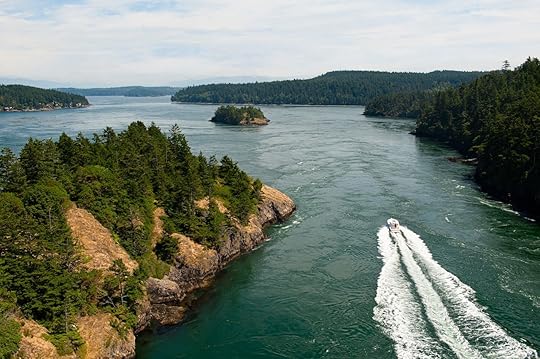
Photo: Sam Strickler/Shutterstock
A place to disconnect, the Yoga Lodge at Whidbey Island is a simple, rustic escape from Seattle. The 10-acre property and surrounding area are home to plenty of wildlife — deer, eagles, and owls, to name a few — reminding visitors that they’re certainly not in the city anymore. Day visitors and weekend retreaters have access to trails throughout the property, gardens, and a variety of yoga classes, from a gentle practice to more intermediate/advanced classes. 

More like this: How Seattle’s suburban Eastside became a jumping off point for all that’s great about Washington
The post How to have the perfect wellness weekend in Washington State appeared first on Matador Network.

The 7 best pastry shops in Paris

There is a bakery in every village and on every city block in France, so you’ll never find yourself craving a sweet treat with nowhere to indulge. But, if you’re in Paris and want to try out more than the run-of-the-mill pain au chocolat and tartes tatin, you’ll have to dig a little deeper than the simple neighborhood shop and head to some of the fanciest food spots in the capital. There, you’ll find incredibly beautiful and tasty pâtisseries that will take your tastebuds way beyond the bougie Ladurée macaroons to reach a level of elegance and deliciousness you didn’t even know was possible in a dessert. Here are the seven most decadent, bucket-list-worthy pastry shops in Paris you need to go to.
1. L’éclair de génie
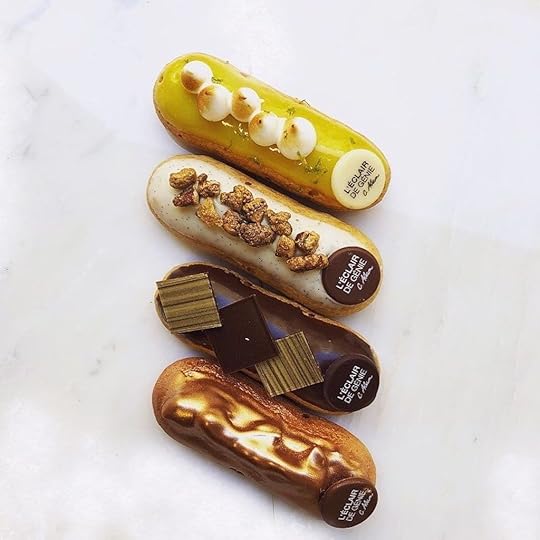
Photo: L’ Eclair de Genie/Facebook
The star of the show in this pastry shop/candy confectionery is the eclair, a pastry made of an elongated choux bun filled with crème pâtissière. Eclairs are a common pastry that you’ll find in just about every French bakery, but the ones created by the very talented Christophe Adam at L’éclair de génie are nothing like those. Because a choux bun is a versatile vessel with infinite possibilities, Adam has created hundreds of incredible eclair flavors — from Iranian pistachio with orange zest to salted caramel to a raspberry-lychee-rose combination — that leave the usual chocolate or coffee flavors in the dust. And the beautifully detailed presentation of each pastry makes staring at it (and snapping a pic) as enjoyable as eating it.
There are several spots in Paris where you can try one of Adam’s deluxe creations, including a small outlet at Gare du Nord if you’re on your way in or out of the French capital and in the Galeries Lafayette if you need a break from staring at that beautiful glass ceiling. But we recommend that you head to the original location in the Marais neighborhood to sit and enjoy a cup of coffee with your treat.
Address: 14 rue Pavée 75004 Paris
Hours of operation: Monday to Sunday from 11:00 AM to 7:30 PM
2. Stohrer
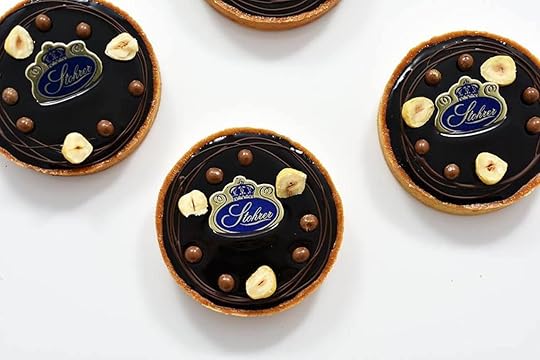
Photo: Stohrer, la plus ancienne patisserie de Paris/Facebook
Founded in 1730 by Nicolas Stohrer, King Louis XV’s pastry chef, Stohrer is the oldest pastry shop in Paris — and if they’ve been in operation for almost 300 years, it’s because they make kickass desserts. For one, Nicolas Stohrer is the man who created the Baba au rhum, a small and round yeast cake that is soaked in rum and topped with whipped cream and small fruits, so we know the place is no joke. Second, the current pastry chef, Jeffrey Cagnes, creates such magnificent pastries that your body will vibrate with excitement just by looking at them.
The shop itself is stunning, so we recommend that you take your time to sit and enjoy the over-the-top, luxurious decor while stuffing your face with passion fruit and framboise tarts and slices vanilla flan.
Address: 51 Rue Montorgueil 75002 Paris
Hours of operation: Daily, from 7:30 AM to 8:30 PM
3. Café Pouchkine
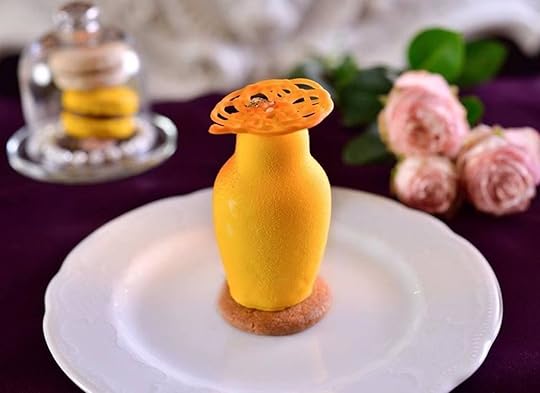
Photo: Cafe Pouchkine/Facebook
Café Pouchkine is a pastry shop and a restaurant. The restaurant is open all day long, so it’s a great place to have a cup of their amazing, thick hot chocolate accompanied by a sweet treat at any time of the day. To make sure you get a spot if you want to linger, we recommend that you book a table (online reservations are possible). Alternatively, you can buy your sweet treats from the shop and take them back home with you.
Café Pouchkine serves pastries, chocolate creations, cakes, and baked goods, and everything is absolutely perfect. Every item looks like an art piece and tastes as good as it looks. The Médovik, a Russian dessert made of buckwheat honey biscuit, sweet condensed milk, and Russian sour cream is a showstopper. The Matryoshka bergamot poppy strawberry will stop you dead in your tacks.
Café Pouchkine is incredibly elegant and very intimate, so spend some time to take in the grand decor reminiscent of an 18th-century Russian palace while you enjoy one of their creations. If you’re just shopping for treats, don’t feel like you’re missing out — the shop itself is outstanding.
Address: 16 place de la Madeleine. 75008 Paris
Hours of operation:
Pastry shop. Monday to Saturday from 8:30 AM to 9:00 PM; Sundays and bank holidays from 10:00 AM to 9:00 PM
Restaurant and tea room. Monday to Saturday from 8:30 AM to 10:30 PM; Sundays and bank holidays from 10:00 AM to 10:30 PM
4. Angelina
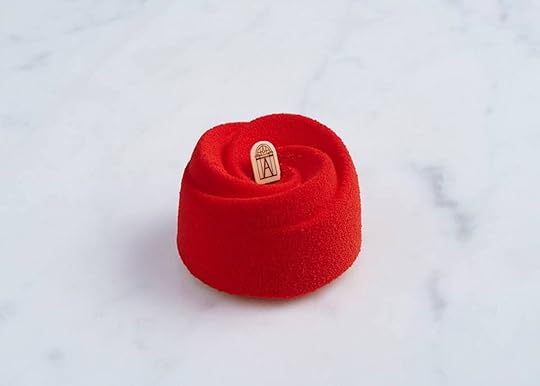
Photo: Angelina Paris/Facebook
Since its opening in 1903, the Angelina tea house has been the meeting point for those who have a taste for the finer things in life and who can afford them, including Marcel Proust and Coco Chanel.
There are now two Angelina tea houses in Paris, and both are exceptionally beautiful. The decor is sumptuous, the service and the atmosphere are perfect, and the pastries are the bomb. Order an “African Hot Chocolate” with the trademark Mont-Blanc pastry (meringue, light whipped cream, and chestnut paste vermicelli) on the side for the full Angelina experience. If chocolate ain’t your thang, don’t freak out, the pastry menu is filled with amazing creations for every taste bud. Our favorites are the fruit imitations — they look so perfect that it’s hard to sink your spoon in, but they taste incredible, so don’t overthink it.
Addresses and hours of operation:
Paris Rivoli. 226 rue de Rivoli 75001 Paris. Open Monday to Friday from 7:30 AM to 7:30 PM; Saturday and Sunday from 8:30 AM to 7:30 PM
Palais des congrès. 2 place de la porte Maillot 75017 Paris. Open Monday to Friday from 9:00 AM to 7:30 PM; Saturday and Sunday from 10:00 AM to 7:30 PM
5. Hugo & Victor
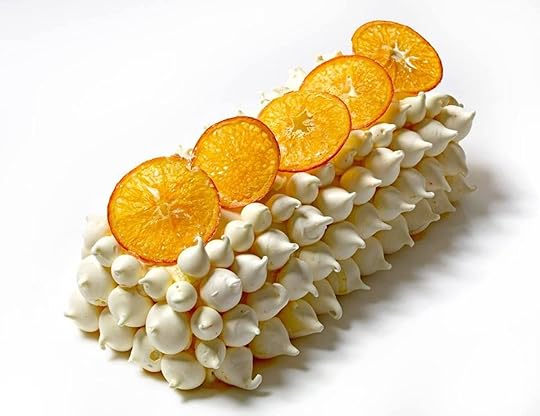
Photo: Hugo & Victor/Facebook
Hugues Pouget, the owner and pastry chef at Hugo & Victor, not only creates beautiful and tasty cakes, chocolates, baked goods, sweet loaves, and pastries, but he also makes sure to use the best of what the natural world offers. Out of respect for the environment and to get the best flavor he can from a product, Pouget only uses fruits that are in season for his deserts — no strawberry tarts in February. He also refuses to use artificial coloring and flavoring. Being engaged like Pouget pushes him to be creative all year long and, despite the hurdles, his desserts are the stuff of dreams.
Pouget likes to work with citrus, so we recommend that you give his grapefruit tart a try. The shop also offers several versions of the Financier — a small almond cake — all of which are incredibly tasty, so grab a few to enjoy with a cup of coffee later on. If you’re in Paris around the holidays, we beg you to purchase a Bûche de Noël, a traditional French Christmas dessert — you won’t regret it.
Address: 40 boulevard Raspail 75007 Paris
Hours of operation: Monday to Thursday from 10:00 AM to 7:00 PM.; Friday from 10:00 AM to 8:00 PM; Saturday from 9:00 AM to 8:00 PM; Sunday from 10:00 AM to 7:00 PM
6. Fauchon
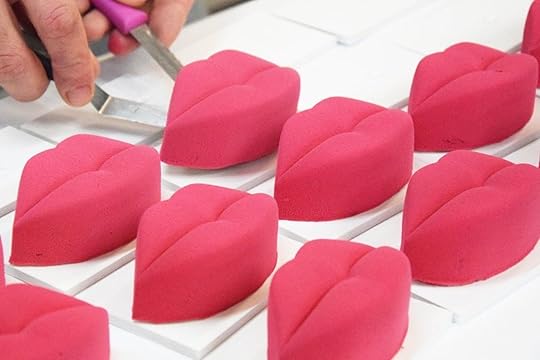
Photo: FAUCHON/Facebook
Fauchon is a luxury deli that has been in the same spot in Paris for 132 years. The store has been recently renovated into a modern, lavish boutique that is very conducive to hours of browsing. There, you can purchase fancy cheese, pâté, wine, etc. — all of exceptional quality, but the real reason anyone comes here is the sweet treats department.
There are macarons, pastries to share, individual pastries, tiered cakes and breakfast pastries, all of which are beautiful and delicious. We recommend you try out some individual pastries, especially the iconic “Bisou-Bisou,” a fruity, lip-shaped creation that will make you weak in the knees.
Address: 30 place de la Madeleine 75008 Paris
Hours of operation: Monday to Saturday from 10:00 AM to 8:00 PM
7. Karamel

Photo: Karamel Paris/Facebook
If fruit pastries and cakes are not decadent enough for your tastes, head over to Karamel and you’re sure to find a dessert that will satisfy you. Nicolas Haelewyn, the owner and pastry chef at Karamel, and his team make treats around one delicious element: caramel.
Besides making tasty caramel candies and chocolates, Karamel offers two delicious pastries: the nut and caramel tart (see photo above) and the lemon and hazelnut pie. The baked goods, like the caramel flan and the peanut cookie, are not to be ignored either — they work very well with a strong cup of joe. Everything is very affordable, so can buy a few and try them out.
Address: 67 rue Saint Dominique 75007 Paris
Hours of operation: Monday to Friday from 10:00 AM to 8:00 PM; Saturday and Sunday from 9:00 AM to 8:00 PM 

More like this: 7 delicious pastries worth traveling to France for
The post 7 mouth-watering pastry shops you must check out in Paris appeared first on Matador Network.

Basque Country has the best cider
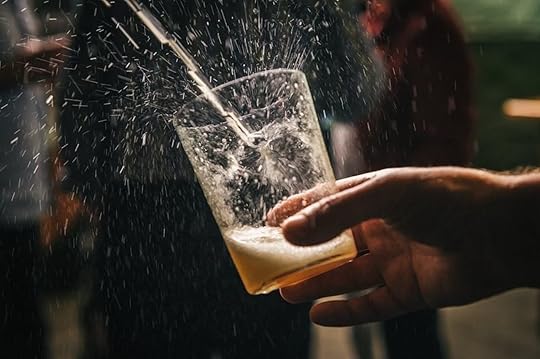
Germany has its beer halls, France has its vineyards, and the Basque region of northern Spain has its cider houses. Every year from January to the end of April, the Basque region revolves around cider, or sagardoa in the native language. The beverage has been part of local culture for centuries, and it’s far from your average cider. Here’s where and how to enjoy it.
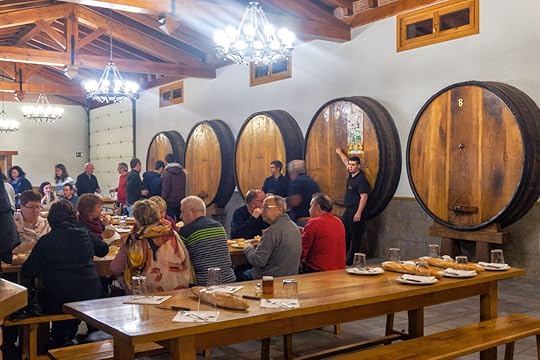
Photo: Jess Kraft/Shutterstock
Find a cider house.
Cider houses, or sagardotegi, pack with locals and a few in-the-know travelers eager for a taste of the year’s cider. Conversations at cider houses are periodically punctuated with yells of ”txotx” (pronounced “choach”) as the tap of a 3,000-plus-gallon barrel is opened and people line up to catch their own drink from the spout. It’s a tradition unlike any other and something that should be on everyone’s travel to-do list.
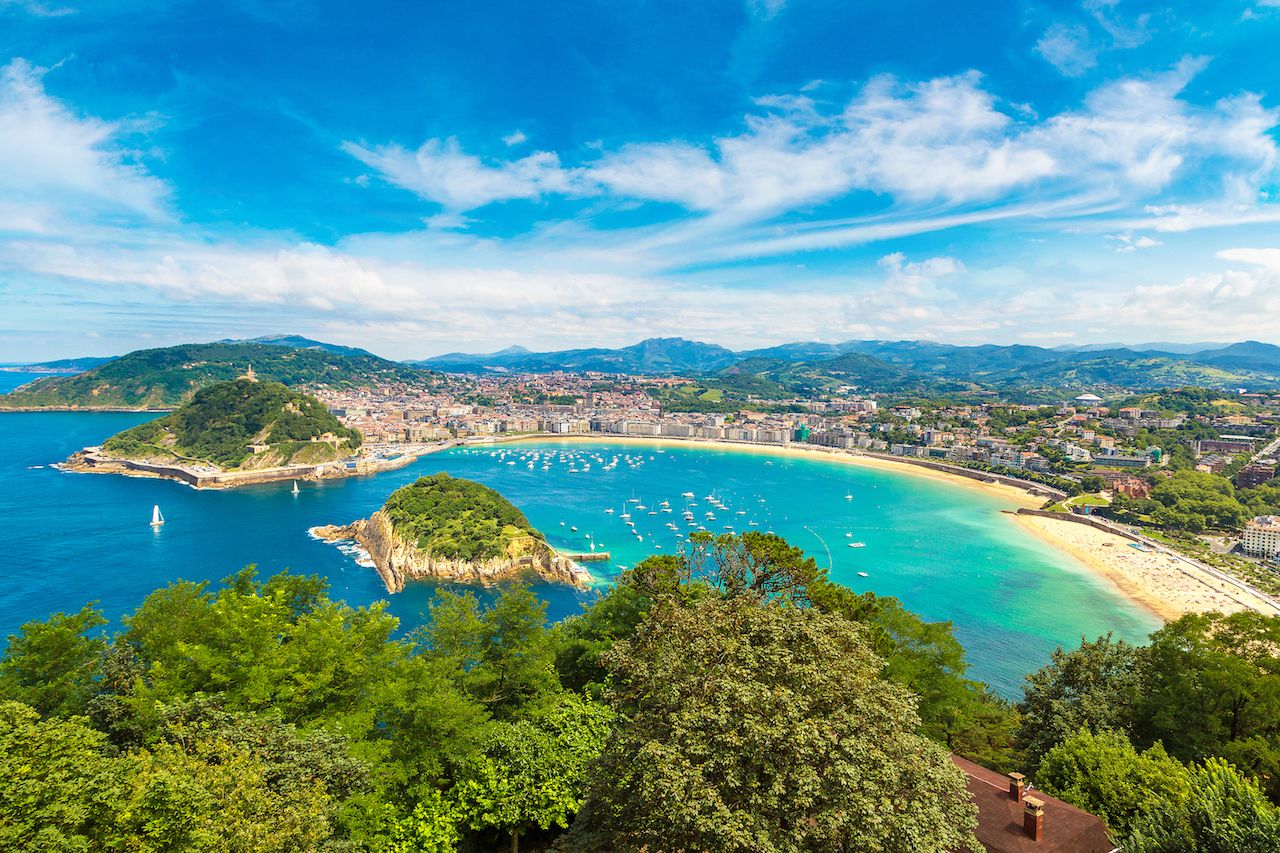
Photo: SF/Shutterstock
The cider capital of Spanish Basque Country is the 6,000-person town of San Sebastián. There are 19 cider houses in and around the town, each serving cider in generally the same way: The tap is opened, and a line of people forms to catch a glass. The first person places their glass in the stream of cider coming from the barrel, and the person behind positions their glass just underneath so the stream shoots into their glass as soon as the first person is done. This continues until the line ends, with plenty of food served throughout.
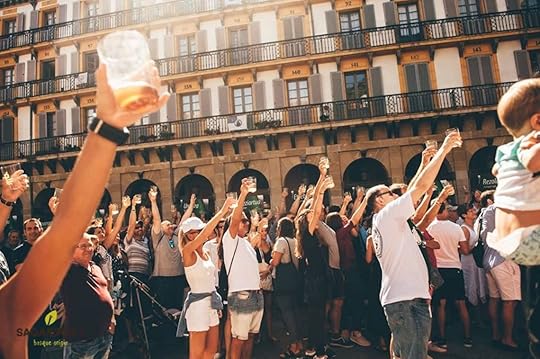
Photo: Sagardoa Route/Facebook
Partake in a thousand year old tradition.
The San Sebastián Tourism Board states that “Proof exists to the effect that the Basques have been familiar with both apples and cider since time immemorial.” Other region-specific sources note that the first record of apple production in the Basque region was in 1014. Regardless of whose history you choose to believe, the Basque cider tradition is many centuries in the making.
In the early years, gatherings at cider houses were for people who would later buy the cider in bulk. Buyers would visit the cider houses to taste from the various barrels, called kupelas, and pick which cider they wanted. Each barrel is slightly different depending on the apples thrown in but all are naturally fermented, very lightly carbonated, and tart. Basque cider is also funky tasting with an earthy, straw-like flavor. The taste description is, to put it lightly, off-putting for anyone expecting what passes for cider in America. Peter Yi, the owner of the Basque-inspired Brooklyn Cider House, describes the style best as “a combination of all the flavors that require patience and dedication to understand.” It can be challenging on its own, but it shines when paired with food.
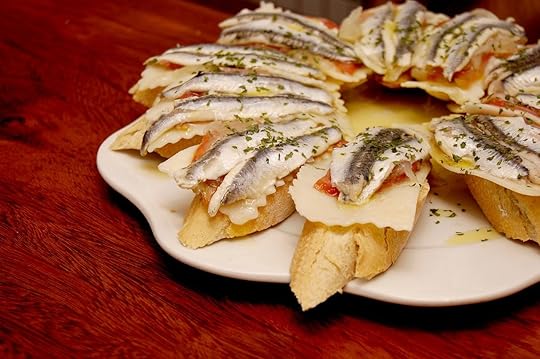
Photo: Alvaro German Vilela/Shutterstock
Enjoy it with a hearty meal.
As long as there have been Basque cider houses, there has been Basque cider-house food. Drinking on an empty stomach doesn’t lead to the best purchasing decisions, after all, and that’s what cider buyers were there to do. Basque cider is low in alcohol (usually around five percent), but surely there are stories out there of some hapless soul who went to buy the year’s cider for his tavern on an empty stomach, hit the cider stream one too many times, and left with the wrong order.
Food isn’t just a precaution at the sagardotegis, though; it’s a treat. The Basque region has more Michelin-star restaurants per capita than anywhere in the world. Menus at cider houses are more rustic but no less delightful. Salted cod, omelettes, steak, local Idiazabal cheese, jelly, and walnuts are traditionally served. People stand or sit at long communal tables to eat, leaving their plates only to go catch more cider in their glass.
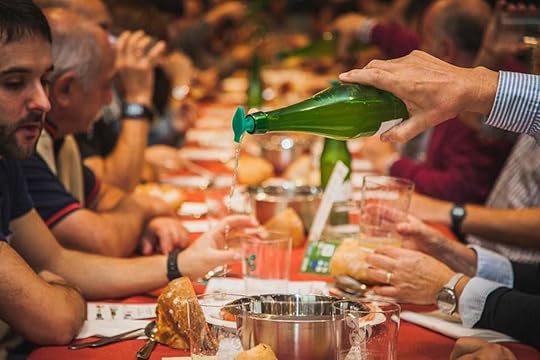
Photo: Sagardoa Route/Facebook
“When I tried ciders in the past, it was just the cider along without the food,” Yi, who spent 25 years as a wine buyer before opening Brooklyn Cider House, says. “It wasn’t attractive to me. But when I had it with food, it all made sense: It’s intended to be consumed with food. That was when the thunderbolt went off, and that moment just absolutely changed my opinion on cider.”
The taste and traditions of Basque cider are unlike anything else once you get the hang of catching it and acclimate to its unique flavors.
“Once you understand this cider, there’s no going back,” Yi says. “The cider is almost like an abstract painting. You can’t go head on with this cider and understand it immediately.”
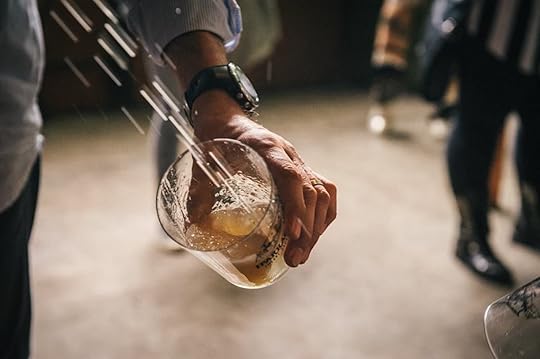
Photo: Sagardoa Route/Facebook
Learn how to catch and drink Basque cider.
The food and convivial atmosphere are great, but cider houses are about cider. That means that when you go, you should know how to get said cider into your glass the correct way.
First things first: stand in line. It may look like an unorganized mass, but there’s a pecking order. When it’s your turn, approach the stream of cider from the side so as not to get it on yourself. Place your glass underneath the glass of the person in front of you and follow through. You want the cider to hit the side and splash in — it’s OK for some to fall to the floor. The cider’s natural carbonation means that it has very few bubbles, if any at all. Catching it as it spurts from the barrel aerates it and gives it some life.
It’s important to limit how much cider you catch. It tastes best when freshly poured in small doses. (Don’t worry, there are plenty of opportunities to get up and try more.)

Photo: Sagardoa Route/Petritegi/Facebook
Know where to drink Basque cider.
San Sebastián is the first stop for anyone wanting to experience traditional Basque cider. There are numerous cider houses a short 30-minute drive from the town, as well as places accessible by taxi and public transport. Some of the popular sagardotegis are Zapiain, Petritegi, and Zelaia. Reservations are suggested but not required. In order to plan out your cider trip best, though, check out the Sagardoa Route, which provides info on 59 cider houses, trips and guided tours, and other cider-related events and Basque cultural experiences.

Photo: Brooklyn Cider House/Facebook
If you can’t make it out to Spain, Brooklyn Cider House’s 12,000-square-foot cidery and restaurant in the Bushwick neighborhood of Brooklyn offers a taste of sagardotegis using apples grown in New York state. 

More like this: The 5 most epic whisky experiences in Scotland
The post You’ll fall in love with Basque Country’s wild cider traditions appeared first on Matador Network.

Plan Thanksgiving Amtrak travel now

Thanksgiving is rapidly approaching, and if you rely on train travel to make it to your Thanksgiving dinner, you might want to plan ahead this year. Thanksgiving week is the busiest travel period of the year, and Amtrak expects to need every passenger railcar in its fleet, plus the addition of extra train cars. Many routes that don’t typically require reservations will need them, and Amtrak is encouraging riders to buy their tickets in advance to avoid any last-minute holiday stress. Low-fare seats during Thanksgiving week are expected to sell out quickly.
In 2017, Amtrak had its busiest Thanksgiving week ever, transporting over 777,000 passengers across the country. Unsurprisingly, the busiest day was the Sunday following Thanksgiving when everyone was returning home after the long weekend.
To help you plan ahead, Amtrak has released a few tips to keep in mind for Thanksgiving travel:
Extra trains will run in the Northeast Corridor between Boston and DC.
Additional capacity will be added to train routes out West, including the Capitol Corridor (Auburn/Sacramento to San Jose via Oakland), San Joaquins (Oakland/Sacramento to Bakersfield), and Pacific Surfliner (San Diego to Los Angeles to San Luis Obispo).
Reservations will be required for the Pacific Surfliner route between November 21st and the 25th, as well as for the San Joaquins route between November 19th and the 26th.
Morning trains often have more availability than afternoon and evening trains, so plan accordingly.
Changes and expansions to other routes can be viewed here.
In preparation for the Thanksgiving rush, Amtrak has also given its trains a facelift with new seat cushions, carpeting, curtains, and restrooms.
To solidify your Thanksgiving travel, visit Amtrak’s booking site now. 
H/T: Smarter Travel

More like this: The best scenic train trips to see fall foliage in the US
The post Amtrak warns passengers to buy their Thanksgiving train tickets right now appeared first on Matador Network.

The golden cappuccino made with gold
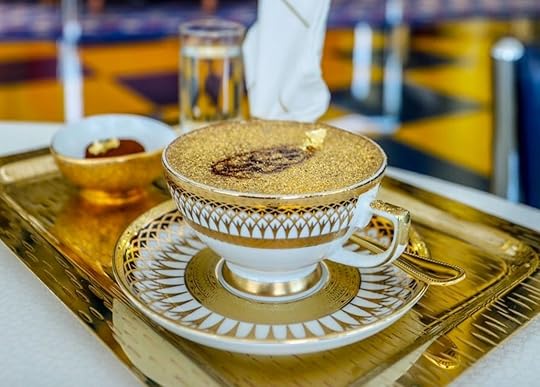
If your tea routine has become a bit stale, you might want to kick things up a notch with this cappuccino made with 24-carat gold. No, it’s not being offered at your neighborhood Starbucks — you’ll have to travel to Dubai’s most luxurious hotel to indulge. The Burj Al Arab is making your coffee break an ornate affair with its Ultimate Gold Cappuccino, served at the Sahn Eddar lounge in the hotel’s atrium. Made with 100 percent Arabica beans, foamed milk, and blended with a generous portion of (edible) 24-carat gold, the drink is also sprinkled with gold flakes, comes with a chocolate marshmallow, and is served on a golden china set.
Voir cette publication sur InstagramUne publication partagée par Burj Al Arab (@burjalarab) le 4 Juil. 2018 à 5 :03 PDT
The Burj Al Arab isn’t the first hotel in Dubai to offer gold-flecked beverages. Last year, the Armani Hotel Dubai inside the Burj Khalifa introduced its own cappuccino, adorned with 23-carat gold flakes.
Voir cette publication sur InstagramUne publication partagée par Burj Al Arab (@burjalarab) le 28 Mars 2018 à 5 :02 PDT
If you do decide to try this golden treat, don’t expect to do it on a budget. The cappuccino costs about $26, and is available from 8:00 AM to 11:00 PM.
For non-coffee drinkers who still need their gold fix, you could always check out the golden ice cream that’s being offered at Anaheim’s Snowopolis in California. But at $14.95 a scoop, the cappuccino might be a better bargain. 
H/T: Lonely Planet

More like this: The 9 best coffee cities in the world
The post This cappuccino made with real gold is classic Dubai appeared first on Matador Network.

Thailand beach to close indefinitely
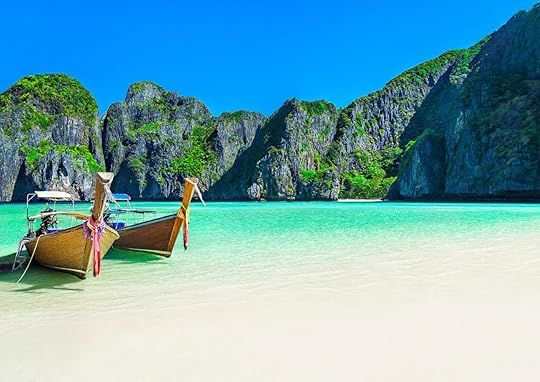
When you have a beach known for its immaculate white sands and pristine waters that 6,000 tourists come to check out every day — something’s gotta give. Thailand’s Maya Bay has been closed indefinitely, per a Tuesday announcement by the country’s Department of National Parks, Wildlife and Plant Conservation. Located off the coast of southern Thailand, Maya Bay is famous as the setting of the movie The Beach (starring Leonardo DiCaprio), and has become one of Thailand’s biggest attractions. Initially, the park was only scheduled to remain closed from June until October 1st, but it was later determined that this wasn’t enough time for Koh Phi Phi Leh island to recover from the damages caused by tourism.
The island’s beaches have taken quite a beating, as thousands of tourists visit each day from nearby islands and coastal resorts, dropping litter into the sea. Marine biologists found that a large part of the area’s coral reefs are gone, and that many fish have vanished. Dr. Thon Thamrongnawasawat, a member of Thailand’s National Strategy Committee on Environmental Development, told the Associated Press, “All the beauty of the beach is gone. We need a time-out for the beach.”
To restore the ecosystem to full strength, new trees and coral must be planted. Their growth, however, won’t happen overnight, and it may take a few years. Songtham Sukswang, director of the Office of National Parks, told Reuters, “We need at least a year or even up to two years or maybe more for the environment to recover — this includes the coral reefs, mangrove, and the beach.”
Unfortunately for vacationers, they won’t be able to access the Insta-famous beach until the ecosystem has recovered. And when it does reopen, you might want to anticipate a limit on the number of daily visitors allowed. 
H/T: Lonely Planet

More like this: The 11 strangest-looking beaches around the world
The post Thailand to close its most popular beach due to overtourism appeared first on Matador Network.

The Disgusting Food Museum to open
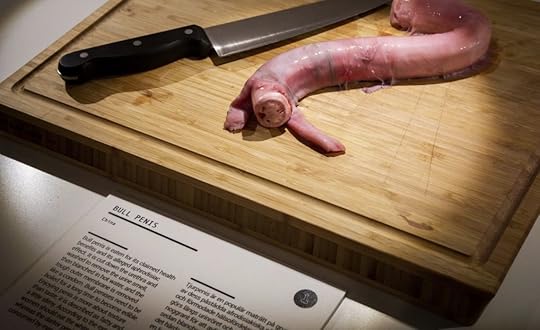
Humans have a natural tendency to want to share gross, unpleasant experiences with others. When we see a car wreck, we slow down to watch. When we taste something disgusting, we tell our friends, “Ew, this is gross. Wanna try it?” And usually, they do. We have an impulse to be fascinated by all things disgusting, and this new museum in Sweden appeals to that impulse. Created by Samuel West and Andrea Ahrens, the Disgusting Food Museum’s goal is to shed some light on foods we may consider “disgusting,” and maybe give them a second chance.
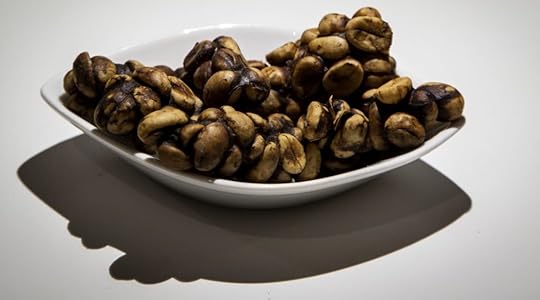
Photo: Disgusting Food Museum
West, the museum’s curator and chief disgustologist, told Lonely Planet that they want people to rethink their assumptions about food. “If disgust is cultural and contextual,” he said, “then it is also changeable.” The museum will feature 80 of the world’s grossest foods, including casu marzu (maggot-infested cheese) from Sardinia, surströmming (fermented herring) from Sweden, and hákarl (aged shark) from Iceland.
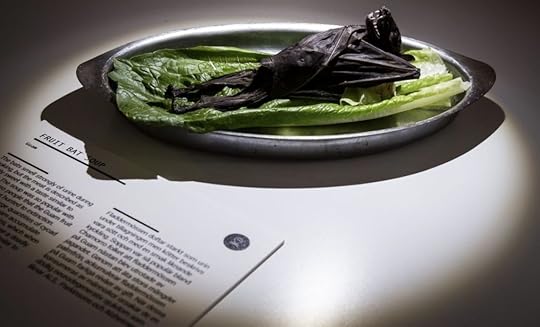
Photo: Disgusting Food Museum
The theme might seem counterintuitive to success, but West hopes the museum will facilitate real change in visitors’ palates. By raising awareness of the world’s less-popular foods, he also aims to “contribute to a growing interest and acceptance of more ecological, sustainable protein sources, such as insects.”
If you really want to challenge yourself, you can participate in the “Taste one for the team” event — a tasting competition between you and your friends, with some pretty serious bragging rights at stake.
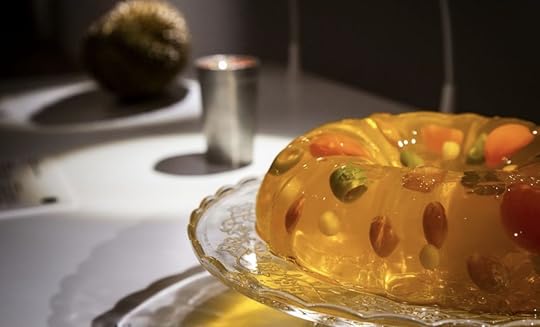
Photo: Disgusting Food Museum
The museum is located in Malmö, Sweden’s third-largest city, and will officially open on October 29th. If you’re eager to see what curious foods you can stomach, you can start planning your visit on the museum’s website. Tickets are $20 per person. 
H/T: Lonely Planet

More like this: 15 bizarre museums from around the world you have to check out
The post A museum of the world’s most disgusting food is opening in Sweden appeared first on Matador Network.

How to prevent jet lag
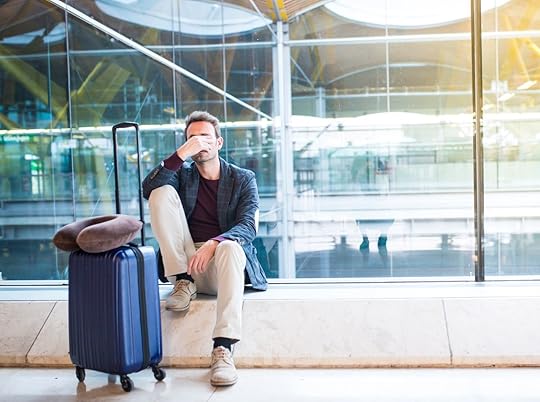
For many, jet lag is the bane of travel. Just when you want to be fresh-footed to explore a new and exciting destination, insomnia, headaches, and a general disorientation pop up and throw your travel plans for a loop. Many have their opinions on curing or even preventing jet lag, ranging from using high-tech devices to drinking lots of water — and while there is no known “cure-all” for jet lag, the next best thing after scientific proof is advice from strangers.
Mattress company leesa polled over 1,000 frequent travelers, both men and women, between the ages of 18 and 85 in hopes of discovering the most common symptoms of jet lag and the most effective ways to combat it. As you begin planning your fall and winter travel, here are the study’s findings.
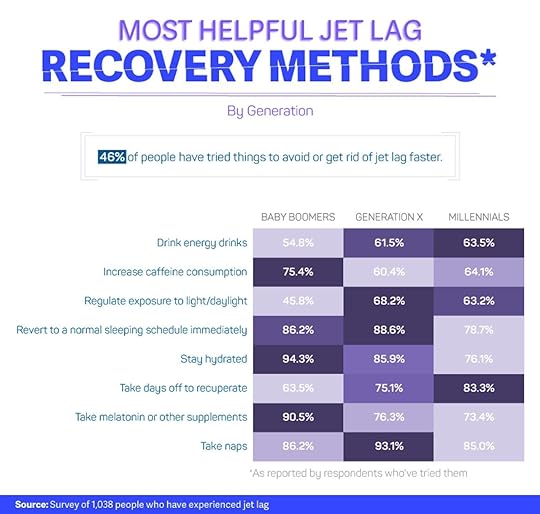
Photo: leesa
The study found that nearly 50 percent of travelers experience jet lag on both ends of their trip. The survey broke results down by age group, with baby boomers, Generation X, and millennials each having a seat at the table. Many key symptoms and prevention methods pointed to generational differences.
Baby boomers, the oldest of the three age groups studied, are surprisingly able to recharge the quickest — generally needing about 2.5 days. Millennials fall between 2.5 and three days, and Gen X’ers need nearly 72 hours. Taking medication such as melatonin actually proved to be the one factor that delayed recovery the most, with all three generations saying it took well over three days to feel ripe again. Taking naps and, perhaps contradicting that, maintaining a consistent sleep schedule were cited as the best way to recover quickly.
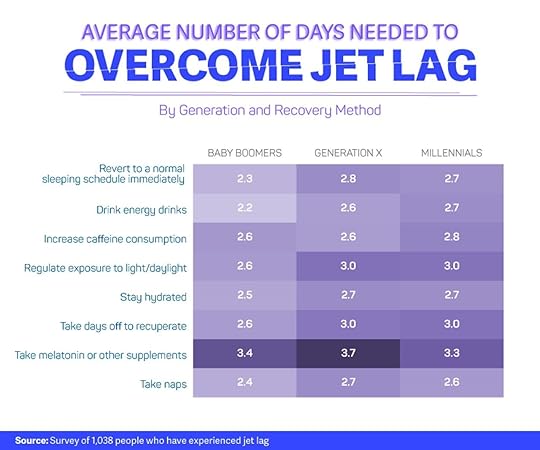
Photo: leesa
The study also polled participants on their most common jet lag-induced symptoms. Millennials noted missing plans with friends as jet lag’s most common impact on their schedule, while their Gen X counterparts placed missing work at the top. The most common symptom across generations is a headache, experienced by 42.4 percent of millennials after flying, on par with the 41.2 percent of those from Generation X and 49.8 percent of baby boomers. The boomers showed their age in the study in one key way — more than one in 10 suffered from backaches and constipation after flying. Fortunately for millennials and Gen X’ers, those side effects haven’t kicked in yet. 
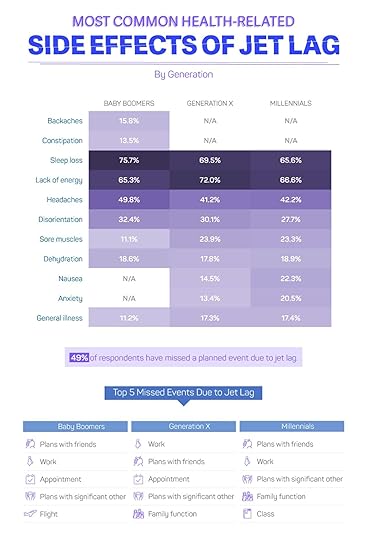
Photo: leesa

More like this: Study shows that security trays are actually the grossest part of flying
The post How frequent travelers combat jet lag appeared first on Matador Network.

October 3, 2018
Why wine lovers should visit Moldova
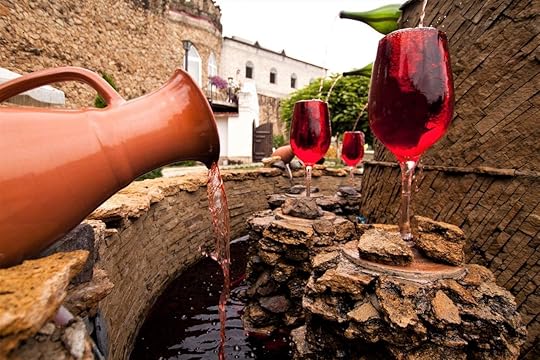
After decades of sanctions, Moldovan wine is finally starting to hit the world’s palates, and the small Eastern European country is transforming into an increasingly popular destination among wine connoisseurs. It’s only a matter of time before Moldova’s wines are at the tip of everyone’s tongues stateside, so stay ahead of the curve by heading straight to the source before the crowds do. Discover the story of this nation’s affiliation with — and affection for — wine and why intrepid grape-hunting travelers should start planning a trip now.
Wine is Moldova’s lifeblood.

Photo: visualpower/Shutterstock
Moldova, sandwiched between Romania and Ukraine, holds the unenviable titles of both the poorest and third-least visited country in Europe. But the nation of 3.5 million has an open secret that captures more attention as each day passes: It’s an incredible destination for fermented beverages. In particular, wine and brandy. The wine industry produces over 125 million liters of the good stuff each year, which amounts to about one billion glasses of wine.
Moldova even looks like a bunch of grapes on the map, with some imagination. During its time as part of the USSR, one in two bottles of wine produced across the vast empire came from here. Today, it’s the world’s 20th largest wine producer. They take the stuff seriously here, so much so that Milestii Mici, near capital Chisinau, holds a Guinness World Record for the world’s largest wine cellar. It stretches more than 250 kilometers and houses over two million bottles. The country’s international airport was even recently dubbed the Wine of Moldova Airport.
Wine production employs one in five Moldovans.

Photo: Serghei Starus/Shutterstock
Almost a fifth of Moldova’s population has a role in wine production. Some grow grapes and make wine, others work in wine cellars and export. The industry’s growth across the country hasn’t happened without hardships, however. Moldovan wine almost vanished on multiple occasions in the last three decades alone, beginning with Mikhail Gorbachev’s anti-alcohol campaign in the 1980s. Then came the collapse of the Soviet Union, followed by recent sanctions in both 2006 and 2013 imposed by Russia, slashing imports from its biggest buyer.
Fortunately, closer ties with Europe inspired an explosion of sales in the West. The state-sponsored campaign is slowly putting Moldova on the map. Despite remaining relatively unknown, the country’s exports soared almost 20 percent between 2015 and 2017, and the investment in the industry promises a firmly established position in the future. In turn, this is driving tourism to Balti and other prominent regions across Moldova, so the country, in general, is definitely on the rise.
Moldova has produced wine since antiquity.
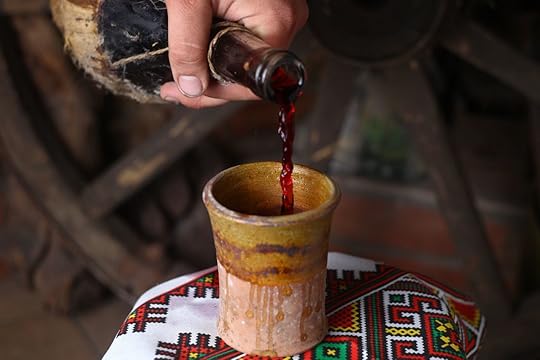
Photo: Kirill Z/Shutterstock
Winemaking in Moldova isn’t new. The country’s grape varieties, cultivation, and brewing techniques have been refined over thousands of years to perfect today’s flavors and brands. Moldova’s earliest grape vines grew 9,000 years ago, and archeologists believe early inhabitants of the region brewed wine at least 5,000 years ago. This is just 1,000 years after the world’s oldest known winery, Areni-1, which was found in an Armenian cave and thought to produce wine some 6,100 years ago.
Ancient Moldovans used their wine as a currency and to reward bravery. As Western Europe entered the Renaissance in the 15th century, so did Moldova’s wine industry. King Stefan the Great has two legacies: He defended against the invading Ottomans, and he revolutionized wine production. The king built cellars; imported and bred new grape varieties, many of which still grow today; and introduced better technology. Almost every city in Moldova now has a Stefan cel Mare Street as a testament to the country’s beloved king. When the Russian Empire and later the Soviet Union absorbed the tiny nation, tsars imported French grapes, including cabernet sauvignon. Soviets built underground cities to store the wine including those at Cricova, Milestii Mici, and Branesti.
The country grows some of Europe’s best grapes.
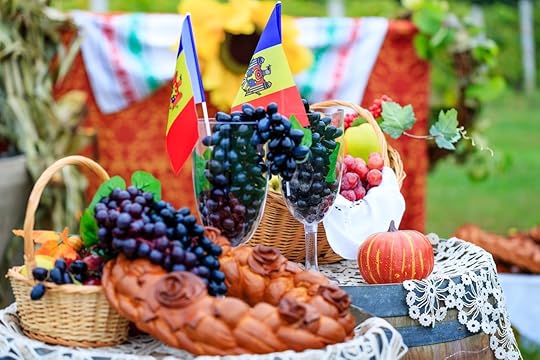
Photo: vmargineanu/Shutterstock
Shelves burst with Bordeaux wine in supermarkets and wine shops across the world. Moldova sits on almost the same latitude as Bordeaux, giving a similar climate. Moldova’s fertile soil rests on a limestone bedrock, which infuses nutrients and minerals creating grapes found nowhere else in the world. Moldova has four wine regions: Condru (central), Valul lui Traian and Stefan Voda (both southern), and northern Balti (pronounced ‘Belts’). Each region has slight variations in climate and soil, but throughout each, most of the grape varieties were imported over the course of multiple centuries. Approximately 10 percent of Moldova’s grapes are indigenous.
Southern Moldova produces some of Europe’s best red grapes, and popular red wines include Purcari’s Chateau and Alb de Purcari. Central and northern regions are more suited to white wines. Northern Balti remains relatively undiscovered — meaning you’re going to find better deals on everything from tastings to lodging and dining.
Each region is an affordable wine-touring destination.
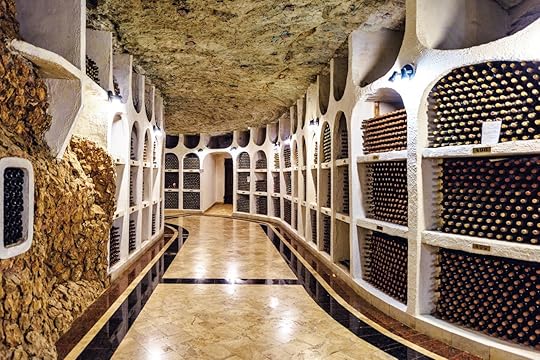
Photo: FrimuFilms/Shutterstock
The first thing you’ll find in Moldova is how affordable wine touring is. You can have an affordable, luxurious, and classy adventure for a fraction of the cost of a similar experience in Italy or France. A glass of Italian wine in Tuscany costs about the same as three bottles in Moldova. Eat at a classy Chisinau or Balti restaurant, order a meal for two and a bottle of sparkling wine, and the bill often costs less than $20. Or sit in a street-side café and have a glass for less than the cost of a soda back home. Four-star accommodation hovers around $50 per night in both Chisinau and Balti, and winery tours start as low as $15. Those heading to northern Moldova will find travel even more affordable.
You can whet your palate with Moldova’s version of Cognac.
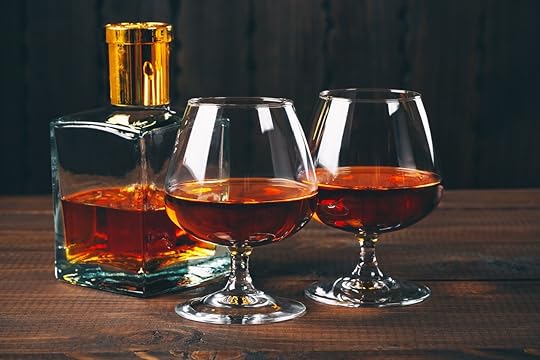
Photo: Ievgenii Meyer/Shutterstock
Moldovan brandy makes headlines for all the right reasons. The amber-colored, fruity beverage — popular and common throughout Moldova — was also as famous in the Soviet Union as its wine. Moldovan brandy is essentially Cognac, but the patented French drink prevents Moldova from using it. Instead, Moldovan Cognac is called divin. Locally sourced grapes produce VS, VSOP, and XO brands, which are available in supermarkets and restaurants throughout the country. Rather than a steep price tag, a bottle of XO (the highest quality) often costs less than $15. Moldova has two divin producers: KVINT in Tiraspol and Barza Alba in Balti. Both distilleries are open to guided tours and divin-sampling sessions.
There’s plenty to do besides imbibe.

Photo: Chumash Maxim/Shutterstock
Moldova has much more than just wine for inquiring minds. Cities across the country resemble a Soviet time capsule, offering a history lesson and making for some great photos and walking tours. Almost forgotten monasteries doubling up as wine cellars fill the countryside. Breakaway state Transnistria and “capital” Tiraspol, a favorite day trip from Chisinau, resemble the Soviet Union as much now as they did 50 years ago. Soviet-style architecture lines Tiraspol’s clean streets with statues of Lenin.
Balti sees hardly any tourists despite its incredible wineries, providing the ultimate off-the-beaten-path adventure. Gold-domed Orthodox cathedrals sit near an almost forgotten synagogue, and the Balti National Theater hosts regular plays and operas with tickets costing just a few dollars. Tour companies can arrange a trip to the Royal Forest, Padurea Domneasca, a sprawling nature reserve 50 kilometers (31 miles) from Balti. Or you can day trip to Moldova’s “Gypsy Capital” in nearby Soroca, whose highlights include elegant Roma mansions and the stunning Soroca Fort with watchtowers that look as though they’re wearing pointed witch hats.
Tips for traveling to Moldova:
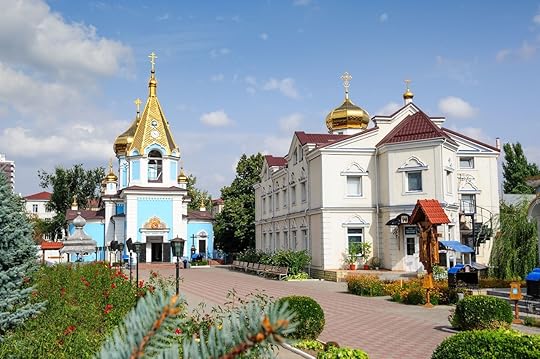
Photo: Serghei Starus/Shutterstock
The fastest way to get to Moldovan wine country is to fly into the Wine of Moldova Airport (formerly Chisinau International Airport). Chisinau, the capital city, acts as a gateway to the rest of the country with hourly bus connections to both Balti and Tiraspol. All three cities have mid-range to luxury accommodation at affordable prices; however, options are more limited in Balti. Book in advance if you can. Direct flights connect Chisinau to a handful of Italian cities, along with Barcelona and London. Others link to dozens of European destinations. Travelers can also take a bus from Eastern Romania’s Iasi (pronounced ‘Yash’) to both Chisinau and Balti.
Getting around Moldova is both an adventure and a challenge. Local minibuses overloaded with passengers and luggage travel to almost every corner of the country — if you’re up for a cheap and crowded road trip. The journey from Chisinau to Balti takes approximately two hours and costs just a few dollars. Prepare for chaotic bus stations, cramped seats, and bumpy roads, but marvel at pastoral Moldova and the occasional vineyard from the window. Private transfers can provide a more comfortable way to get around.
Guided tours are the best option to explore the wineries and divin distilleries as deteriorating road conditions and poor driving standards can make it difficult to drive or cycle. The same climate that makes Moldova a wine-producing giant protects it against extreme weather. Summers are long and sunny with the mercury topping in the high 70s, and winters hover around the freezing point. Summers are better for a longer Moldovan adventure, but visit in fall for the grape harvest and National Wine Day during the first weekend in October. 

More like this: This underrated Canadian wine region is the next Napa Valley
The post Why wine lovers should be planning a trip to Moldova appeared first on Matador Network.

Matador Network's Blog
- Matador Network's profile
- 6 followers



